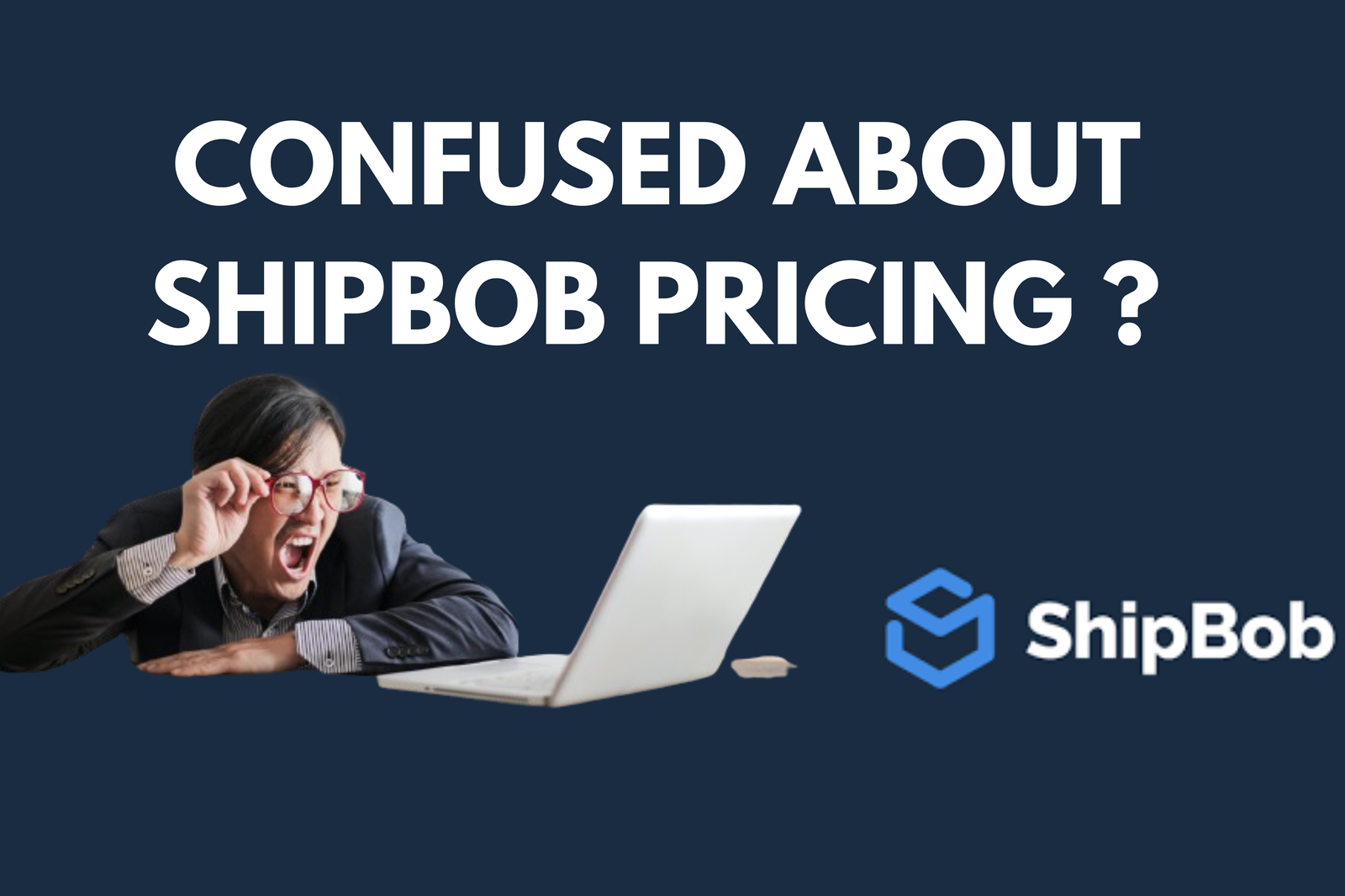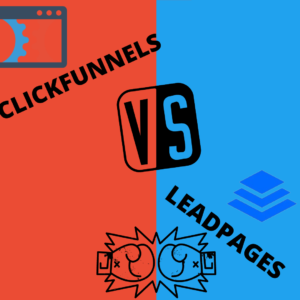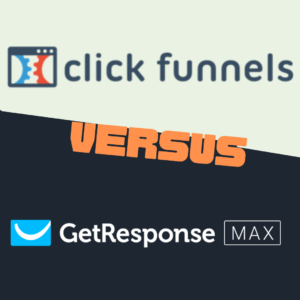Navigating the complexities of fulfillment and shipping costs can be a daunting task for any e-commerce business, but understanding ShipBob pricing is a crucial step towards optimizing your operations and enhancing profitability. ShipBob, a leading fulfillment service provider, offers a comprehensive solution designed to streamline logistics for online retailers.
This blog post aims to demystify ShipBob pricing, providing you with a detailed guide that covers every aspect from storage fees to shipping rates and beyond. Whether you’re a startup looking to understand the basics or a growing enterprise seeking to optimize your fulfillment strategy, our insights into ShipBob’s pricing structure will empower you to make informed decisions that align with your business goals. Join us as we delve into the nuances of ShipBob pricing, ensuring you have the knowledge needed to navigate the e-commerce landscape confidently.
Table of Contents
Overview of ShipBob Pricing Structure
When delving into the realm of e-commerce fulfillment, understanding the intricacies of a service provider’s pricing structure is pivotal for making informed decisions. This is particularly true for ShipBob, a leading logistics platform that offers a comprehensive suite of services designed to streamline the shipping and handling process for online businesses. In this section, we’ll explore the ShipBob pricing structure to provide a clear, concise understanding of how costs are determined and what e-commerce businesses can expect.
Key Components of ShipBob’s Pricing
1. Initial Setup Fees: ShipBob’s approach to onboarding new clients is noteworthy. Prospective users will be pleased to discover that ShipBob typically does not charge initial setup fees. This absence of an upfront cost makes ShipBob an attractive option for startups and established businesses alike, looking to optimize their fulfillment processes without incurring significant initial expenses.
2. Storage Costs: One of the core components of ShipBob’s pricing model revolves around storage. Fees are calculated based on the amount of space your inventory occupies in their warehouses. This is typically measured in cubic feet and billed on a monthly basis. Understanding the specifics of how storage space is calculated can help businesses manage their inventory more effectively and reduce costs.
3. Pick and Pack Fees: Another critical aspect of ShipBob’s pricing is the pick and pack fee. This charge is applied each time an item is picked from storage and prepared for shipment. ShipBob’s pricing model is designed to be transparent, with fees clearly outlined for single items and additional charges for each extra item in an order. This structure encourages efficiency and cost-effectiveness in order fulfillment.
4. Shipping Costs: Shipping fees are variable and depend on several factors, including the destination, size, weight of the package, and the chosen shipping speed. ShipBob utilizes its network and technology to offer competitive shipping rates, leveraging relationships with major carriers to provide cost-effective solutions for businesses.
5. Additional Services: ShipBob also offers a range of additional services, including kitting, international shipping, and special handling for fragile items. These services are priced separately and can be tailored to meet the specific needs of your business, allowing for a customizable fulfillment solution.
Monthly Storage Costs
When exploring the logistics and fulfillment partner for your e-commerce business, understanding the monthly storage costs is crucial. ShipBob’s pricing model for storage is designed to be both flexible and transparent, making it essential for online retailers to grasp how these costs can affect their bottom line. Here’s a detailed look at ShipBob’s monthly storage costs, focusing on how they can impact your e-commerce operations.
ShipBob Pricing for Storage Explained
ShipBob calculates monthly storage costs based on the amount of space your inventory occupies in their fulfillment centers. These costs are typically broken down into two main categories: bin storage and pallet storage. Bin storage is ideal for smaller items, while pallet storage is suited for larger quantities of stock.
The pricing is dynamic, changing with the seasons to accommodate the fluctuating demand throughout the year. For instance, during peak shopping seasons, prices may rise due to higher demand for storage space. Understanding this aspect of ShipBob pricing is vital for planning your inventory levels and storage needs throughout the year.
How ShipBob’s Monthly Storage Fees Are Calculated
ShipBob’s monthly storage fees are calculated based on the cubic footage your inventory occupies. This calculation takes into account the length, width, and height of each bin or pallet of products stored in their facilities. The focus is on maximizing efficiency and minimizing wasted space, encouraging businesses to be strategic about their inventory levels.
Strategies to Optimize Your Storage Costs with ShipBob
Regular Inventory Audits: Regularly review your inventory levels to ensure you’re not overstocking items, especially those that are seasonal or have lower turnover rates.
Inventory Forecasting: Utilize ShipBob’s analytics and reporting tools to predict future inventory needs accurately, allowing you to adjust storage space requirements and avoid excess costs.
Seasonal Planning: Plan for seasonal fluctuations in inventory by increasing or decreasing stock levels based on sales forecasts, thereby optimizing your storage costs.
Fulfillment and Shipping Fees
When it comes to selecting a fulfillment partner for your e-commerce business, understanding the intricacies of fulfillment and shipping fees is crucial. ShipBob, as a leading logistics provider, offers a comprehensive approach to these costs, tailored to meet the diverse needs of online businesses. This segment focuses on dissecting ShipBob’s pricing model for fulfillment and shipping services, ensuring you can make an informed decision about leveraging their solutions for your e-commerce operations.
ShipBob’s Fulfillment Fees Explained
Fulfillment fees at ShipBob are designed to cover the costs associated with the picking, packing, and preparing of orders for shipment. Unlike some providers that charge a flat rate, ShipBob’s fees are calculated based on several factors, including the number of items per order, the packaging materials used, and any special handling requirements. This granularity in pricing ensures that businesses only pay for the services they need, without incurring unnecessary costs.
Understanding Shipping Fees
Shipping fees, on the other hand, are influenced by the weight and dimensions of the package, the destination, and the chosen shipping speed. ShipBob has established relationships with major carriers, allowing for competitive rates and a variety of shipping options, including standard, expedited, and overnight delivery. This flexibility enables e-commerce businesses to offer their customers multiple shipping choices, balancing cost with delivery expectations.
Strategies to Optimize Your Shipping Costs with ShipBob
- Packaging Optimization: By selecting the most appropriate packaging size and materials, businesses can reduce the dimensional weight of their shipments, directly impacting shipping costs.
- Carrier Selection: Take advantage of ShipBob’s carrier partnerships by choosing the most cost-effective option for each shipment, based on the package’s size, weight, and destination.
- Order Consolidation: Whenever possible, consolidate multiple items into a single shipment to reduce the per-item shipping cost, enhancing your overall margins.
Packaging Options and Costs
When it comes to e-commerce fulfillment, packaging plays a pivotal role not just in ensuring product safety but also in brand perception and shipping costs. Understanding ShipBob’s packaging options and related costs is essential for businesses looking to optimize their fulfillment strategy. This segment explores the variety of packaging choices offered by ShipBob and how they impact your bottom line, focusing on both standard and custom packaging solutions.
Standard Packaging Options
ShipBob offers a range of standard packaging options designed to meet the needs of most e-commerce shipments. These options typically include:
- Boxes: Various sizes to accommodate different product dimensions.
- Mailers: Padded or unpadded, ideal for smaller, less fragile items.
- Bubble wrap and packing paper: For added protection during transit.
The costs associated with these standard packaging materials are generally included in ShipBob’s fulfillment pricing. This means businesses can predict their packaging expenses without worrying about additional fees for standard options. It’s a cost-effective solution for many, particularly those just starting out or looking to maintain low overheads.
Custom Packaging Options
For brands that prioritize a unique unboxing experience or have specific packaging needs, ShipBob offers custom packaging solutions. This can range from branded boxes and tape to custom inserts and specialty packaging for fragile items. Custom packaging is an excellent way to enhance brand recognition and customer loyalty but comes with additional costs. These costs vary based on the complexity and material requirements of the packaging design.
Investing in custom packaging typically involves:
- Setup Fees: A one-time cost for creating your custom packaging designs.
- Material Costs: Higher than standard options, depending on the materials and quantities ordered.
- Storage Fees: Custom packaging materials may require more storage space, potentially increasing monthly storage costs.
When to Consider Custom Packaging
Custom packaging should be considered when:
- Brand Experience: Elevating the customer unboxing experience is a key brand strategy.
- Product Specifics: Your products require unique packaging for protection or presentation.
- Market Differentiation: Standing out in a crowded market is a priority.
Account Management and Support Services
When considering the comprehensive services offered by ShipBob, understanding their account management and support services is crucial for businesses aiming to streamline their e-commerce logistics. ShipBob’s pricing model extends beyond mere storage and fulfillment fees, incorporating dedicated support and account management to ensure your operations run smoothly. This segment explores how ShipBob integrates these services into their pricing structure and the value they add to your business operations.
Dedicated Account Management
ShipBob distinguishes itself by offering personalized account management services. Depending on your subscription level, you might have access to a dedicated account manager who serves as your primary point of contact for any queries or issues you encounter. This personalized attention ensures that your specific needs and concerns are addressed promptly, allowing for a smoother operational flow.
In terms of pricing, the availability of dedicated account managers is often included in premium plans. While this might increase your overall cost, the investment can be invaluable, especially for businesses scaling up and requiring closer, more personalized support.
Adding Value Through Support Services
ShipBob’s support services cover a broad spectrum, from onboarding assistance to ongoing operational support. The onboarding process is crucial for businesses to get started on the right foot, and ShipBob’s team ensures that you understand the ins and outs of their system, from integrating your e-commerce platform to setting up your first shipment.
Continuous support is provided through various channels, including email, chat, and phone, ensuring that help is readily available whenever you need it. The focus is on minimizing downtime and resolving any issues as quickly as possible to keep your operations running efficiently.
Returns Management Pricing
Understanding ShipBob’s returns management pricing is crucial for e-commerce businesses aiming to optimize their logistics and customer satisfaction levels. Returns are an inevitable part of online retail, and how you manage them can significantly impact your bottom line and customer experience. Here’s a concise breakdown of what you need to know about ShipBob’s returns management pricing, ensuring your strategy is both cost-effective and customer-friendly.
ShipBob Returns Management Overview
ShipBob offers a streamlined process for handling returns, which is designed to save time and reduce the hassle for both the retailer and the customer. This process includes the reception, inspection, and restocking of returned items, and each step incurs specific costs. Understanding these fees is essential for calculating the overall impact on your business’s finances.
Pricing Structure
The cost associated with returns management is a vital component of the overall pricing model. ShipBob’s pricing for returns management typically involves a flat fee per return. This fee covers the reception of the returned item, its inspection to determine its condition, and the restocking of the item if it is in sellable condition.
It’s important to note that additional fees may apply depending on the condition of the returned item and whether special handling or disposal is required. For items that can be restocked and sold again, the flat fee often proves to be a cost-effective solution for businesses. However, for items that cannot be resold, businesses might incur additional costs related to disposal or recycling, which need to be considered in the overall returns strategy.
Cost-Benefit Analysis
Incorporating a cost-benefit analysis in this section can help businesses understand the value of ShipBob’s returns management services. By comparing the costs associated with managing returns in-house versus outsourcing to ShipBob, businesses can gain insights into how ShipBob pricing can streamline operations and potentially enhance customer satisfaction through efficient returns processing

Special Services Pricing
When considering ShipBob for your e-commerce fulfillment needs, understanding the core pricing structure—covering storage, picking, packing, and shipping—is just the beginning. ShipBob’s pricing also extends to special services that cater to unique business requirements, enhancing your product’s presentation, delivery experience, and overall customer satisfaction. This section delves into the special services ShipBob offers and how they are priced, ensuring you can fully assess the cost implications for your business.
Kitting and Assembly Services
ShipBob offers kitting and assembly services, allowing businesses to bundle products or prepare subscription boxes efficiently. These services are invaluable for promotional campaigns or when selling items that require assembly before shipping. The pricing for these services is typically based on the complexity and time required for the kitting or assembly process. Understanding this aspect of ShipBob pricing helps in forecasting costs for special product launches or seasonal promotions.
Custom Packaging and Branding Options
Custom packaging is an excellent way to enhance brand recognition and customer unboxing experience. ShipBob allows for the use of branded boxes, tape, and inserts, among other customization options. The pricing for custom packaging varies depending on the materials used, the order volume, and the complexity of the design. Businesses can request quotes based on their specific needs, making it an essential factor to consider in the overall ShipBob pricing strategy.
International Shipping Solutions
For e-commerce businesses looking to expand globally, ShipBob offers international shipping services. This includes handling customs paperwork and providing competitive shipping rates to various countries. The pricing for international shipping depends on the destination, package size, weight, and preferred delivery speed. Given the complexities of international logistics, understanding these costs is crucial for businesses planning to sell overseas.
Special Handling for Fragile, Heavy, or Oversized Items
Items that are fragile, heavy, or oversized require special handling to ensure they reach customers in perfect condition. ShipBob’s pricing for these services takes into account the additional care and packaging needed, as well as the logistics of transporting larger or more delicate items. This can significantly affect the cost, especially for products with unique shipping requirements.

Comparison with Competitors
When evaluating ShipBob’s pricing, it’s crucial to compare it with its main competitors to understand where it stands in the market. This analysis will focus on how ShipBob’s pricing structure compares with those of Fulfillment by Amazon (FBA), Shopify Fulfillment Network, and other prominent fulfillment services. Understanding these differences can help e-commerce businesses make informed decisions based on cost, service quality, and additional features.
Fulfillment by Amazon (FBA)
- Pricing Model: FBA charges for storage space and per item fulfilled. Prices can vary significantly based on item size, weight, and storage duration, especially during peak seasons.
- Comparison: Compared to ShipBob, FBA may be more cost-effective for businesses that already sell primarily on Amazon due to integrated services and prime shipping. However, for multi-channel retailers, ShipBob’s straightforward pricing and flexibility could offer a more tailored and potentially cost-saving solution.
Shopify Fulfillment Network
- Pricing Model: Shopify’s fulfillment prices are tailored to the needs of Shopify store owners, with costs depending on storage, handling, and shipping services used.
- Comparison: ShipBob’s pricing might be more transparent and predictable for businesses looking for a clear breakdown of costs without being tied to a specific e-commerce platform. Shopify Fulfillment Network, on the other hand, is ideal for Shopify users looking for an integrated solution.
Other Competitors
- Pricing Models: Other fulfillment services like ShipStation or 3PL Central offer various pricing models, often customized based on volume, services needed, and specific business requirements.
- Comparison: ShipBob’s advantage lies in its scalability and its ability to offer competitive rates for a range of services from storage to fulfillment and returns, which might not always be the case with other providers that cater to either very small or very large businesses.
Key Considerations
- Service Levels and Additional Fees: While comparing prices, consider the level of service (such as speed of delivery, customer service quality, return handling) and any additional fees that might not be immediately obvious.
- Customization and Flexibility: ShipBob often stands out for its ability to customize solutions for individual business needs, a factor that should be weighed alongside raw pricing comparisons.
- Integration and Ease of Use: Consider how well each option integrates with your existing e-commerce ecosystem. The less friction in integration, the more savings in time and potential costs in the long run.
In summary, when discussing “ShipBob pricing” in the context of competition, it’s not just about who offers the lowest fees but also about the overall value provided. Businesses must consider their unique needs, sales channels, and growth plans when evaluating these services.
Discounts and Deals
When it comes to optimizing your e-commerce logistics and fulfillment strategy, understanding the nuances of ShipBob pricing is crucial. One area where businesses can significantly benefit is by leveraging the various discounts and deals offered by ShipBob. These cost-saving opportunities can make a substantial difference in your overall fulfillment expenses, making ShipBob an attractive option for businesses of all sizes.
Volume Discounts
ShipBob offers volume discounts, which are designed to reduce the cost per unit as your order volume increases. This tiered pricing structure means that the more orders you process through ShipBob, the lower your per-order fulfillment cost becomes. This approach rewards growing businesses by offering more competitive rates as their order volumes increase. It’s an essential aspect of ShipBob pricing that can lead to significant savings, especially for businesses experiencing rapid growth.
For businesses looking to understand how these discounts can affect their bottom line, a detailed breakdown or a calculator tool provided by ShipBob can be invaluable.
Promotional Offers
Throughout the year, ShipBob may run promotional offers that can provide additional savings on fulfillment costs. These promotions might include reduced rates for storage during off-peak seasons, discounted shipping rates for certain services, or waived setup fees for new customers. Staying informed about these offers can help businesses save money and plan their logistics more efficiently.
An effective way to stay updated on ShipBob’s latest promotions is to subscribe to their newsletter or follow them on social media. Additionally, asking your ShipBob representative about current or upcoming promotions can ensure you don’t miss out on any opportunities.
Loyalty Programs
ShipBob values long-term relationships with its clients and may offer loyalty programs to reward businesses for their continued partnership. These programs might include benefits such as reduced rates after a certain period or a number of shipments, exclusive deals, or access to premium services at a discounted rate.
Negotiating Better Rates
While ShipBob provides a structured pricing model, there’s often room for negotiation, especially for businesses with substantial shipping volumes or unique needs. Engaging in discussions with ShipBob about your specific requirements can lead to customized pricing packages that better fit your business model and budget. Don’t hesitate to reach out and negotiate; it’s an essential step in optimizing your fulfillment strategy.
FAQs on ShipBob Pricing
Navigating the pricing structure of fulfillment services can often seem complex and opaque, but understanding these details is crucial for e-commerce businesses aiming to optimize their shipping and handling costs. In this section, we’ll address some frequently asked questions about ShipBob pricing, providing clear, concise answers to help you make informed decisions.
1. What does ShipBob pricing include?
ShipBob’s pricing model is designed to be transparent and comprehensive, covering various aspects of the fulfillment process. This typically includes receiving your inventory, warehousing (storage fees), pick and pack services, shipping costs, and any special services like kitting or custom packaging. It’s important to note that the exact cost can vary depending on factors such as shipment size, weight, and destination.
Image suggestion: A visual breakdown of ShipBob’s pricing components.
2. Are there any hidden fees in ShipBob pricing?
ShipBob aims to maintain transparency in its pricing structure. However, it’s crucial for businesses to inquire about potential additional costs that might not be evident upfront. These could include setup fees, minimum monthly spend requirements, or charges for supplementary services. Always request a detailed quote and read the service agreement thoroughly to avoid surprises.
3. How does volume affect ShipBob pricing?
Volume discounts are a significant aspect of ShipBob’s pricing strategy. As your shipment volume increases, you may be eligible for reduced rates on storage, pick and pack, and shipping fees. This tiered pricing structure benefits growing businesses by lowering the cost per unit as they scale.
Image suggestion: A graph showing the relationship between volume and pricing discounts.
4. Can I negotiate ShipBob pricing?
Yes, negotiation is possible with ShipBob, especially for businesses with high shipment volumes or specific logistic needs. It’s advisable to discuss your business model, anticipated volume, and any unique requirements with ShipBob’s sales team to explore customized pricing options.
5. How does ShipBob’s pricing compare to other fulfillment services?
ShipBob’s pricing is competitive within the industry, often providing more value through their technology, customer service, and global fulfillment network. However, costs can vary based on your business’s specific needs. Comparing quotes from several providers, including services offered, fees, and customer reviews, is the best way to assess which fulfillment service offers the best value for your business.
6. Does ShipBob offer international shipping, and how is it priced?
Yes, ShipBob offers international shipping, which is priced based on the destination country, package size, and weight, and chosen shipping method (economy, standard, express). International shipping also incurs additional costs like duties and taxes, which businesses need to consider.
7. What are the billing cycles for ShipBob pricing?
ShipBob typically bills its clients on a monthly cycle. The invoice will detail charges for the services utilized during the billing period, including storage, fulfillment, and any additional services requested. Understanding the billing cycle is crucial for managing your cash flow effectively.
Conclusion: Navigating ShipBob Pricing for E-commerce Success

Understanding the intricacies of ShipBob pricing is more than just a necessity—it’s a strategic advantage for any e-commerce business looking to streamline its fulfillment process, optimize costs, and scale efficiently. Throughout this guide, we’ve unpacked the layers of ShipBob’s pricing structure, from storage and fulfillment fees to packaging options and discounts, providing a comprehensive overview to help you make informed decisions tailored to your business needs.
The key to leveraging ShipBob’s services effectively lies in recognizing how each aspect of their pricing model impacts your overall logistics strategy. Whether it’s taking advantage of volume discounts, negotiating terms to better fit your business model, or understanding billing cycles, the goal is always to find the most cost-effective and efficient fulfillment solution.
Remember, while cost is a critical factor, it’s equally important to consider the value ShipBob adds through its technology-driven platform, global fulfillment network, and customer support. These elements contribute to a seamless logistics operation that can significantly enhance your customer’s experience, ultimately driving loyalty and growth for your brand.
As you consider ShipBob for your fulfillment needs, reflect on how their pricing structure aligns with your business objectives. Evaluate the scalability, flexibility, and the level of support offered. The right fulfillment partner is not just a service provider but a crucial component of your business’s success story.
In conclusion, investing time to understand ShipBob pricing and how it integrates with your business strategy is essential. With this knowledge, you’re better equipped to negotiate a deal that not only meets your current needs but also supports your growth ambitions. As the e-commerce landscape evolves, partnering with a fulfillment provider like ShipBob can be your stepping stone to not just meeting but exceeding your customers’ expectations.
Ready to take your e-commerce logistics to the next level? Reach out to ShipBob today for a personalized quote and discover how they can help you optimize your shipping strategy, reduce overheads, and delight your customers every step of the way.





